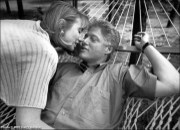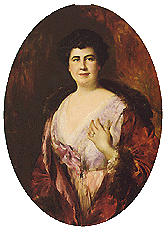Think of this as Volume 11, Number 13 of A-Clue.com, the online newsletter I’ve written since 1997. Enjoy.
When you look at American politics from the perspective of generations, one of the most startling things you learn is how each generation’s Anti-Thesis, the myths, values and assumptions which fought the previous era, must fall as the era falls.
Easy to say, hard to put into practice, but voters manage it. They do it by building a new Thesis within the rising party, then battling the old Anti-Thesis within their own party until it’s dead.
Here’s how it has run, in every generational crisis, from the last crisis in the 1960s backward through the Civil War:
40 years ago, this meant the Eisenhower Republicans. The party faction which Dwight D. Eisenhower brought to power was moderate in tone, wanting only to lean against the assumptions of the New Deal and make them work better. By the 1960s this meant Nelson Rockefeller (right), who became a hated figure within the new New York Conservative Party starting in 1960. While Rockefeller ended up (briefly) as Gerald Ford’s Vice President, he had lost his relevance by that time. Today moderate Republicanism is just about dead.- 36 years before that, this meant Wilson Democrats, represented best by Wilson’s own son-in-law, William McAdoo. Woodrow Wilson crafted a marriage of
convenience between business-oriented Democrats in the northeast and the remnants of failed Bryan populism. Roosevelt’s nomination was fueled by his opposition to the former and his alliance with the latter. It was McAdoo (right), who had tried for the nomination twice before, whom Roosevelt most needed to outmaneuver in order to win himself.
36 years before that, this meant the Mugwumps. The Mugwumps — a made-up word implying Big Chiefs — were reform-minded Democrats who allied with urban machines to elect Grover Cleveland starting in 1884. Cleveland’s endorsement of bonds backed by private gold in 1895, meant to stave off U.S. bankruptcy at a time when tariffs were the main source of revenue, collapsed his coalition. Mark Twain (right) is credited with coining the term Mugwump, and represented this early progressive impulse. Theodore Roosevelt inherited the Mugwumps in his Progressive Republican coalition.
36 years before that, this meant the Whigs. The party of Henry Clay (right) believed in "civic improvements" like canals and railroads, meaning they sought a more activist government than the Jacksonians. They were wiped out by the creation of the Republican Party starting in 1854, which had different priorities, namely slavery and industry.
Notice however that Nixon came out of the Eisenhower Anti-Thesis, that Franklin Roosevelt had been a cabinet member under Wilson, that Theodore Roosevelt had been a young Mugwump, and that Lincoln had run in the 1840s as a Whig. This is what fueled my November, 2007 Clue and my identification of her as Hillary M. Nixon.
Today, of course, the Clinton Democrats represent the Anti-Thesis to Reaganism, which is the polite term for the Nixon Thesis.
Their "Third Way" was meant to "triangulate" between the Republicans and
the liberal Democratic base, eking out victories with a policy of
moderate reform.
This worked, in a policy sense, throughout the 1990s, just as
Eisenhower’s policies seemed to work well during the 1950s, and
Wilson’s during the 1910s. But when the assumptions these older
movements were leaning against — the FDR New Deal Assumption, the TR
Progressive Assumption, the Gilded Age assumptions — collapsed, they
had to collapse too.
When I wrote that Hillary Clinton would win this election some months ago,
it was based on my assumption she would run like Richard Nixon. Nixon,
like FDR before him, had played a big part in the earlier Anti-Thesis,
but governed based on a Southern Strategy which was a way of
cementing the informal alliance with the Wallace Democrats of 1968.
Instead, mainly thanks to the rise of Barack Obama, Clinton has had
to run, lately, more as the living ghost of her husband. She has become
almost like Edith Galt Wilson (left),
who practically ran the country after her husband’s 1919 stroke. In all
her mau-mauing about having played an active role in her husband’s
Presidency, it’s funny how she never tried to claim credit for keeping
the wheels going while Bill was in the throes of Monica-Gate.
It’s because his Woodrow Wilson is still alive.
Even if, by some unlikely miracle, Hillary Clinton became the
nominee and won the election, she would still have to govern as
something new, based on the new coalition built by Howard Dean, John
Edwards, and Barack Obama. She has destroyed herself these last weeks
by explicitly running against that coalition, and that’s the real story
of this month.

















I recall being told that a Mugwump was a fence-sitter, “With his mug on one side of the fence and his wump on the other.” Sic transit moderati.
I recall being told that a Mugwump was a fence-sitter, “With his mug on one side of the fence and his wump on the other.” Sic transit moderati.